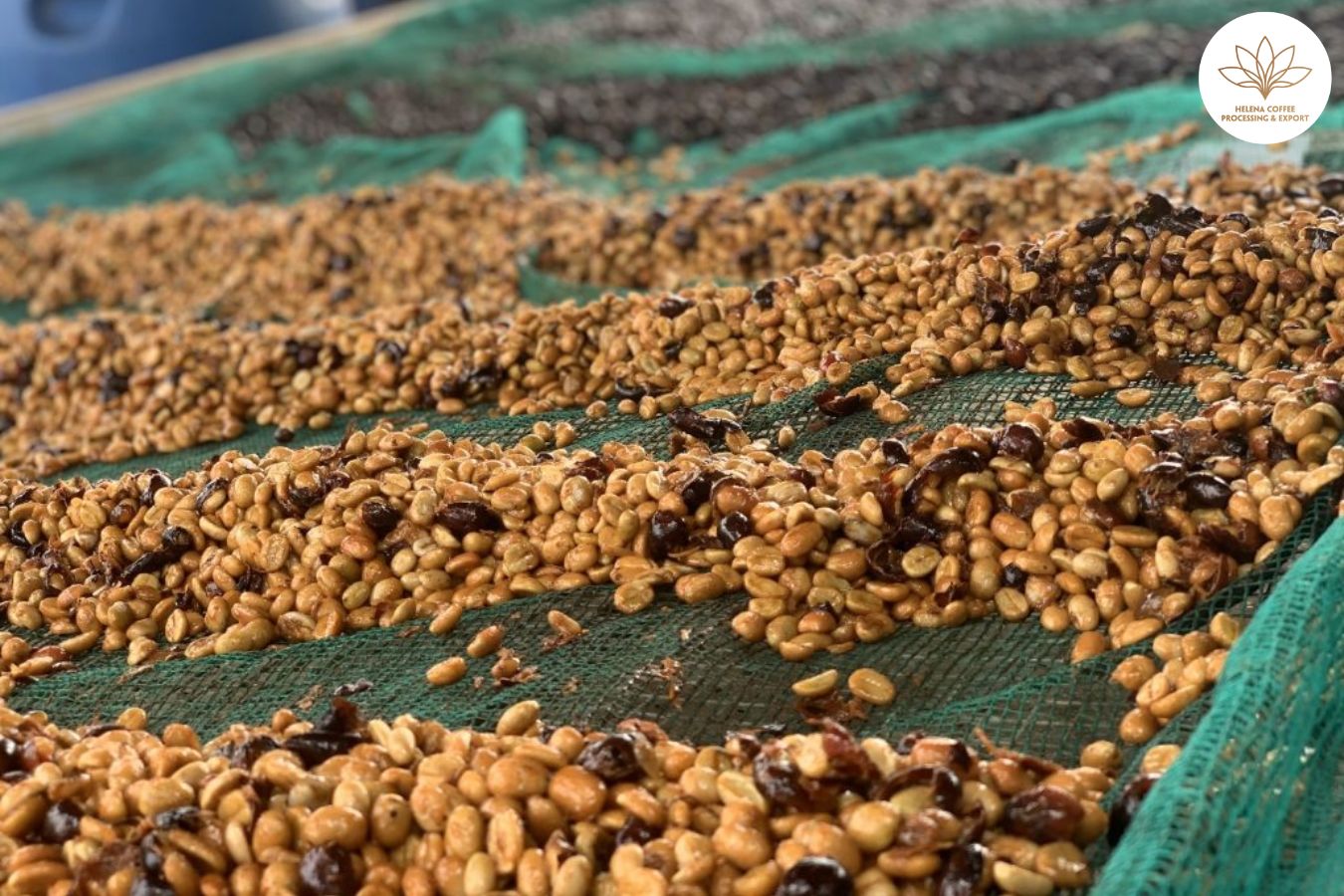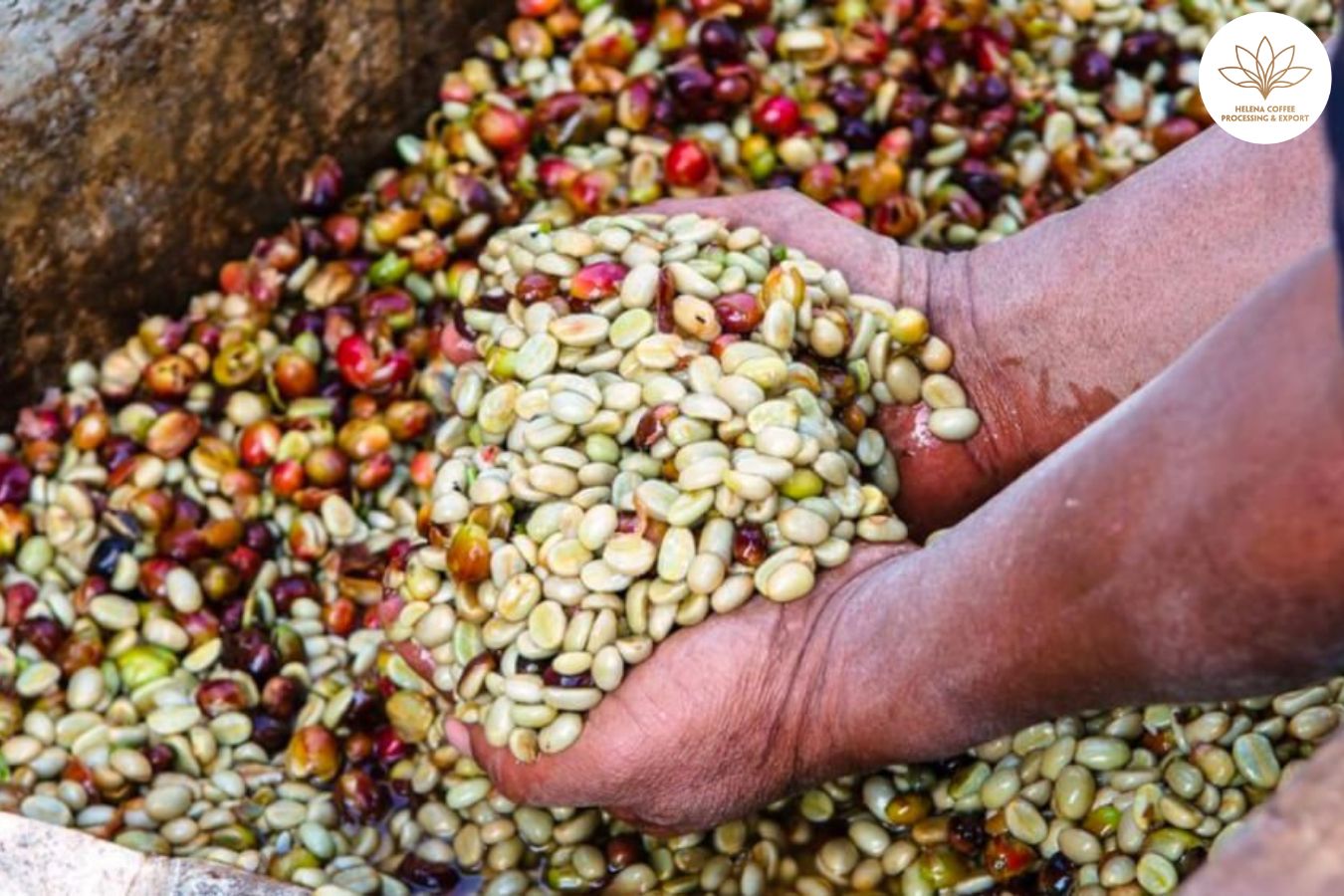
Lactic Fermentation Test In Wet Processing: This is the next part of the series introducing unique coffee processing methods, through customizing the fermentation process based on science. In the previous article, we introduced the 700-hour fermentation test in dry processing – by a producer from Colombia. In this article we will approach an experimental control of fermentation in wet processing .
The two main agents in the fermentation process of wild coffee are yeast and lactic acid bacteria (Lactic acid bacteria abbreviated as LAB*) . Simply put, lactic acid bacteria – a large group of naturally occurring bacteria that convert glucose into lactic acid ( in case you don’t like the simplicity, you can see more here ).
During this process, LAB creates a plethora of delicious flavor compounds like esters, ketones and aldehydes – which can give coffee its distinctive floral, fruity, creamy and buttery aromas. Introducing suitable LAB strains into the fermentation process can reduce fermentation time from 24 to 12 hours, while significantly improving coffee quality. In the first study describing the potential use of LAB bacteria, the cupping score of coffee increased from 80 points to 88 points (de Melo Pereira et al. 2016 ).
Basis of applying lactic bacteria in coffee fermentation
“Lactic fermentation” in coffee may be considered experimental, but lactic fermentation has been used in foods since the Stone Age – in the early days of agriculture. From yogurt to vegetables and fruits, all are processed based on lactic fermentation, such as kimchi kim, cucumbers, sauerkraut, etc. dating back to at least 2000 BC (Avey , 2014 ).
Regardless of the application, lactic fermentation methods require the exclusion of air (more precisely, oxygen) from the fermentation medium – similar to sealing a jar of pickles. Therefore, there is considerable overlap between this type of “lactic fermentation process” and this type of “anaerobic fermentation” process.
Simply put, fermentation is an “anaerobic” process and it involves many metabolic pathways so that a microorganism can use organic matter – specifically sugars, to produce energy, and therefore depending on the products of the fermentation process, we have alcoholic fermentation (yeast is the agent that produces alcohol – in the fermentation process of beer, wine,…), lactic fermentation, and fermentation. Probionic enzymes – with the main products being the corresponding acids. In this section, you can see more about the Biochemistry of coffee fermentation to better understand.
Going back to lactic fermentation, in theory, eliminating air will limit yeast growth. Most yeasts can function without oxygen (but they multiply much faster when they have access to oxygen). Low oxygen levels also prevent the growth of some bacteria that require oxygen to survive, such as acetic acid (vinegar-fermenting) bacteria. On the other hand, lactic acid bacteria belong to the group of “ facultative anaerobes ” – they can grow in environments with/or without oxygen, similar to the yeast Saccharomyces cerevisiae – they do not care much about whether Do they have access to oxygen?
However, there is little evidence that removing oxygen helps LAB thrive. In fact, most of the so-called lactic fermentations can be easily carried out by yeast, since they can grow well with or without oxygen, by switching between aerobic metabolic processes. aerobic and anaerobic.
By excluding oxygen, you are narrowing the options of what bacteria can be present in the fermentation medium. But you don’t know if LAB is really growing strongly or not, you’re just guessing. Because yeast can also switch their metabolism to produce lactic acid and they create a lot of flavor.
Lactic fermentation method in wet processing
For her version of lactic coffee fermentation, Lucia Solis , a coffee fermentation and processing expert working mainly in Latin America, used a trick that has been used for thousands of years to soak vegetables – is to add salt. Salt slows the growth of many species of yeast and bacteria. Therefore, with less competition, certain salt-tolerant LAB species can grow, producing lactic acid and contributing other flavor precursors as they grow stronger.
Even the recipe for this process is very similar to the recipe for making pickles: Start with a clean container, add peeled coffee, then mix in 2% non-iodized salt by weight of coffee. get high . For example, if you ferment a pilot batch of coffee with 8kg of peeled cherries, you should add 160g of salt. The container is then sealed to maintain a low-oxygen environment and left to ferment until the pH reaches 3.5 , at which point the coffee is ready to be washed and dried.
In general, the lactic fermentation process – due to its simplicity – is only a teaching method to demonstrate some principles of fermentation control and is not really a commercial process. However, in published experiments by students from Lucia Solis ‘s training classes , compared to control coffee processed without fermentation, “The coffee had a richer, richer texture. ; It’s also sweeter, has a pleasant sour taste – and doesn’t have the salty taste of salt.”
Why not add LAB from the beginning?
If you’ve followed Prime for a while – and read through articles on the topic of fermentation , you may have understood that “anaerobic fermentation” is a misnomer ( that’s why we use quotation marks ), because according to Scientifically defined, fermentation is an anaerobic process . And therefore, the term “lactic fermentation” is also incorrect. We really shouldn’t use this designation unless LAB strains are added to actually dominate the fermentation process. And therefore, the name of this post “Lactic Fermentation” that we mentioned is closer to natural fermentation than fermentation with the addition of lactic acid bacteria.
The only way to get a true “lactic fermentation” is to add lactic acid bacteria to the controlled fermentation. Inoculating enough of a particular strain into a yeast medium will give it a head start – and so it can be considered a starter strain** . If the conditions are right for it to grow, it can compete with other microorganisms living in and around the coffee and dominate the fermentation process.
Yeast can be dried and packaged quite easily, and once dry, it will keep for a long time – for example, in small packets of dry yeast used for baking. On the other hand, bacteria cannot be completely dried in the same way, so bacterial cultures must be shipped in water or freeze-dried and then kept refrigerated – both of which significantly increase costs. , meanwhile “most people realize that yeast used in coffee processing is inherently expensive” – according to Lucia Solis .
Once bacterial cultures like these are brought to market, we can finally talk about lactic fermentation in coffee – with semantic precision, by then, it would seem “ lactic,” like “anaerobic,” is largely useful only as a marketing term and does not reflect the true complexity of what happens in the fermentation tank.
FAQS:
- Wet-processed Robusta Roasted Coffee Supplier
- Wet-processed Arabica Roasted Coffee Beans Supplier
- What Is Wet Polished Processing In Green Coffee Beans?